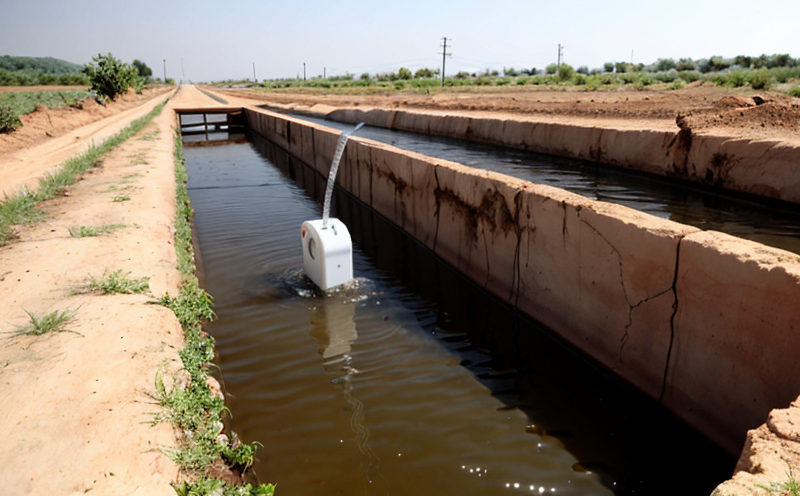ASTM D2036 Cyanide in Water Testing
The ASTM D2036 test method is a widely recognized standard used to determine the cyanide content in water samples. This method is crucial for ensuring compliance with environmental regulations, especially within sectors like mining where cyanide is commonly used during the extraction process.
The ASTM D2036 procedure involves a series of steps designed to accurately measure cyanide levels. Initially, the water sample must be properly prepared by filtering and diluting it if necessary. The standard then specifies the use of a colorimetric method involving the addition of reagents that react with cyanide ions to form a stable complex. This reaction results in a measurable change in color intensity which is directly proportional to the cyanide concentration.
The test apparatus required includes a spectrophotometer for accurate measurement, along with specific reagents such as potassium ferricyanide and sodium hydroxide. The acceptance criteria are stringent: the difference between duplicate samples should not exceed 10% of the average value. This ensures that results are reliable and reproducible.
The importance of this test cannot be overstated for quality managers, compliance officers, R&D engineers, and procurement teams in mining operations. By adhering to ASTM D2036 standards, they can ensure that their processes meet both internal safety protocols and external regulatory requirements. Properly conducted cyanide testing helps prevent environmental contamination, protects worker health, and contributes to sustainable practices.
Understanding the nuances of ASTM D2036 is essential for anyone involved in mining operations. It highlights how precise measurements play a critical role in maintaining operational integrity while adhering to global standards.
Scope and Methodology
| Step | Description |
|---|---|
| Sample Preparation | Filter the water sample if turbid. Dilute as necessary to fall within the linear range of the method. |
| Reagent Addition | Add potassium ferricyanide and sodium hydroxide in a specific sequence to form a stable cyanide complex. |
| Spectrophotometric Measurement | Measure the absorbance at a specified wavelength using a spectrophotometer. |
| Data Analysis | Compare the absorbance value against calibration standards to determine cyanide concentration. |
The methodology outlined in ASTM D2036 is rigorous and ensures accurate quantification of cyanide. Each step is critical, from proper sample preparation to precise reagent addition, all aimed at achieving reliable results that meet international standards.
Industry Applications
- Mining operations where cyanide is used in the extraction process.
- Environmental monitoring to ensure compliance with cyanide concentration limits.
- R&D activities focusing on improving cyanide management techniques.
- Procurement processes that require certification of cyanide-free materials or processes.
The application of ASTM D2036 is not limited to mining alone but extends across various industries dealing with water quality. It serves as a benchmark for ensuring the safety and environmental responsibility in all sectors utilizing this method.
Why Choose This Test
Cyanide testing using ASTM D2036 is an indispensable tool for maintaining stringent standards of quality and compliance within mining operations. Here are some compelling reasons why choosing this test is advantageous:
- Precision: The method ensures highly accurate measurements through its calibrated steps and rigorous acceptance criteria.
- Regulatory Compliance: It helps in meeting stringent environmental regulations, ensuring that operations do not exceed cyanide concentration limits.
- Risk Management: By detecting cyanide levels early, potential risks to both human health and the environment are minimized.
- Sustainability: The test supports sustainable mining practices by providing data essential for continuous improvement.
The benefits of adhering to ASTM D2036 extend beyond mere compliance; they contribute significantly to operational efficiency, safety, and environmental stewardship.





